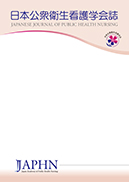Volume 6, Issue 1
Displaying 1-12 of 12 articles from this issue
- |<
- <
- 1
- >
- >|
Foreword
-
2017 Volume 6 Issue 1 Pages 1
Published: 2017
Released on J-STAGE: June 02, 2017
Download PDF (499K)
Research Article
-
Article type: Research Article
2017 Volume 6 Issue 1 Pages 2-9
Published: 2017
Released on J-STAGE: June 02, 2017
Download PDF (286K) Full view HTML -
Article type: Research Article
2017 Volume 6 Issue 1 Pages 10-18
Published: 2017
Released on J-STAGE: June 02, 2017
Download PDF (358K) Full view HTML -
Article type: Research Article
2017 Volume 6 Issue 1 Pages 19-27
Published: 2017
Released on J-STAGE: June 02, 2017
Download PDF (561K) Full view HTML -
Article type: Research Article
2017 Volume 6 Issue 1 Pages 28-36
Published: 2017
Released on J-STAGE: June 02, 2017
Download PDF (332K) Full view HTML -
Article type: Research Article
2017 Volume 6 Issue 1 Pages 37-46
Published: 2017
Released on J-STAGE: June 02, 2017
Download PDF (315K) Full view HTML -
Article type: Research Article
2017 Volume 6 Issue 1 Pages 47-56
Published: 2017
Released on J-STAGE: June 02, 2017
Download PDF (334K) Full view HTML
Public Health Nursing Report
-
Article type: Public Health Nursing Report
2017 Volume 6 Issue 1 Pages 57-64
Published: 2017
Released on J-STAGE: June 02, 2017
Download PDF (336K) Full view HTML
The 5th Japan Academy of Public Health Nursing Conference
SERIES Challenge to Visualize the Grand Design of Public Health Nursing
-
2017 Volume 6 Issue 1 Pages 65-68
Published: 2017
Released on J-STAGE: January 17, 2020
Download PDF (2033K) -
2017 Volume 6 Issue 1 Pages 69-72
Published: 2017
Released on J-STAGE: January 17, 2020
Download PDF (1019K)
-
2017 Volume 6 Issue 1 Pages 73-82
Published: 2017
Released on J-STAGE: June 02, 2017
Download PDF (3017K)
-
2017 Volume 6 Issue 1 Pages 83-87
Published: 2017
Released on J-STAGE: January 17, 2020
Download PDF (1925K)
- |<
- <
- 1
- >
- >|
